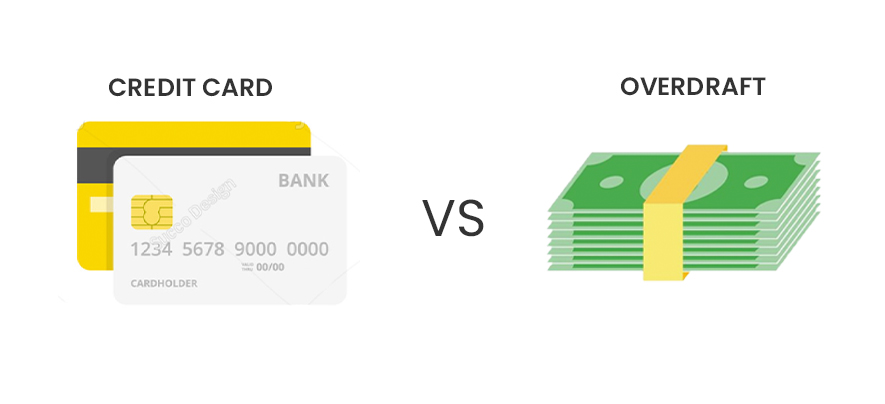Credit is one of the basic financial requirements and when it comes to addressing the short term needs, there are several types of credit facilities such as credit card and bank overdraft. There are several pros and cons of bank overdraft and credit card and the suitability of both the credit products depends on the type of requirements and nature of earnings. Both credit card and overdraft carry certain charges, interest on the amount withdrawn/availed, credit limits, etc.
Credit cards are largely used for daily requirements, several big-quantum purchases and for few specific requirements on which the facility of Equated Monthly Instalments (EMIs) can be availed. The prime benefit of the credit card is the 55 to 60 days of the interest-free period under which an individual can avail credit up to the prescribed credit limit on the credit card by the bank or the credit card issuing entity.
After the completion of the 60-day interest-free period of the credit period, interest is levied on the balance amount and banks charge a late payment fee on the credit card bill paid after the due date. Banks and other credit card issuing corporations also have the provision to pay the minimum amount due in case a person is not able to clear the total credit card bill at a time. The bill amount carried forward by paying the minimum amount due attracts an interest rate which ranges from 22 to 44 per cent per annum.
Bank overdraft, on the other hand, have no interest-free period. The interest on the amount available on the overdraft facility is charged only in case the amount is withdrawn. Under the overdraft facility, a person is granted a certain limit up to which the account can be overdrawn. For instance, if a person is having an overdraft limit of Rs 50,000 is not liable to pay any interest on the credit limit extended until the time the amount has been utilised. The interest will be charged on the amount withdrawn from the overdraft facility after the customer utilises a certain percentage of the overdraft limit.
Conventionally, overdraft facilities are used by big enterprises which are involved in the trading business, while, credit cards are used by individuals due to its 60-day interest-free period with which several short-term requirements can be met. With the help of overdraft facilities provided by the bank, an enterprise can pay off bills, square off obligatory payables by taking short-term credit.
Bank Overdraft Vs Credit Card Outstanding
| Product | Pros | Cons | Most suitable for |
| Credit Card | Quicker approval process as compared to OD | High-interest rates as compared to credit cards | Everyday spending |
| The benefit of reward programs as per usage | Easy access to funds often leads to overspending | Shopping | |
| Piling up of debt due to a ‘minimum repayment’ option given to users | |||
| Personal Overdraft | Cheaper interest rate as compared to a credit card | End to end loan process can be time-consuming | To clear short term debts |
| Borrowers are only charged interest if they use funds from their overdraft | To fund unexpected costs | ||
| OD facility allows you to manage your cash flow better in case of emergency credit requirements. |
Overdraft, sometimes also referred as credit line OD, is a form of unsecured loan wherein your credit limit is sanctioned and you pay interest only when you make a withdrawal. Quite similar to a Credit Card.
- Lower Interest Rate
Because interest rate on Overdraft is almost half the interest rate generally charged on a credit card, your monthly instalment is lower. Personal Overdraft from LoanTap is offered at 1.5% monthly interest. For example, if you have an outstanding amount of Rs. 1 lakh on your existing credit card, then you are charged interest of Rs 3,000- Rs. 5,000 per month as instalment. On the other hand, when you withdraw the same amount from your Personal Overdraft facility, you pay an instalment of Rs 1,500 per month. Plus, you can also avail the auto debit facility to build financial discipline.
- Tenure
By availing an Overdraft, you get higher tenure to repay without impacting your credit score. The tenure for a loan amount of Rs. 1 lakh can be set to 60 months in a Personal Overdraft Loan, while a credit card revolving credit facility generates monthly bill cycle of 30-50 days.
- End usage
Credit cards are used primarily for swiping them. If one withdraws cash from credit card, it usually attracts high charges. On the other hand, you can use Personal Overdraft Loan to swipe as well as withdraw cash. Flexibility and choice of end usage remains with you.

